Muhammad Ali: Highlights from boxing legend’s big fights
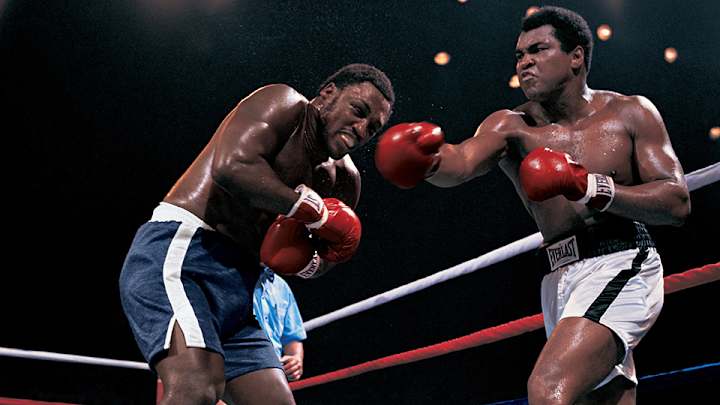
Muhammad Ali, legendary boxer and social activist, died on June 3, 2016. He was 74.
Ali is widely considered to be one of the greatest heavyweight boxers of all time, having won the heavyweight title three times. Ali’s brilliance in the ring endured despite his 1967 arrest for refusing to join the United States military, which halted his boxing career for four years as the case went to the Supreme Court.
After the Supreme Court overturned Ali’s conviction, he resumed boxing and his successes continued. Ali fought in numerous big-time bouts, perhaps none more famous than his two duels with Sonny Liston, a trilogy of fights with Joe Frazier and “The Rumble in the Jungle” with George Foreman.
Here are highlights from some of Ali’s biggest fights.
• From the SI Vault: The Art of Ali (05.05.69)
Ali vs. Liston I
[youtube:https://www.youtube.com/watch?v=bvzw9xSuEHY]
And here’s SI’s gallery of Ali-Liston I.
Muhammad Ali vs. Sonny Liston I
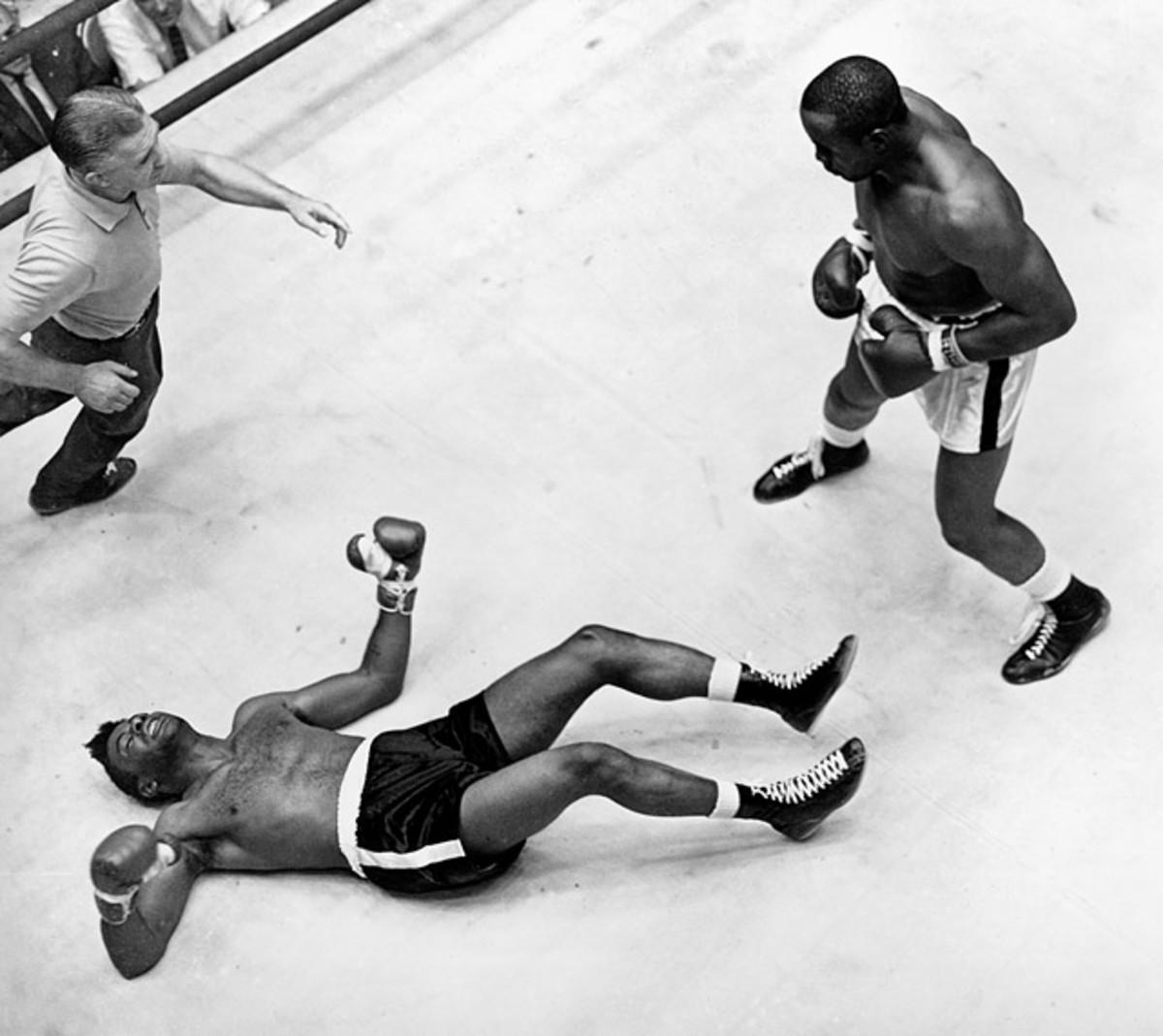
In the early 1960s, Sonny Liston loomed as the most fearsome fighter in the sport. He destroyed Floyd Patterson in one round to win the heavyweight title in 1962 and, here, in Las Vegas 10 months later, he again flattened Patterson in the opening round. Most boxing fans considered Liston unbeatable.
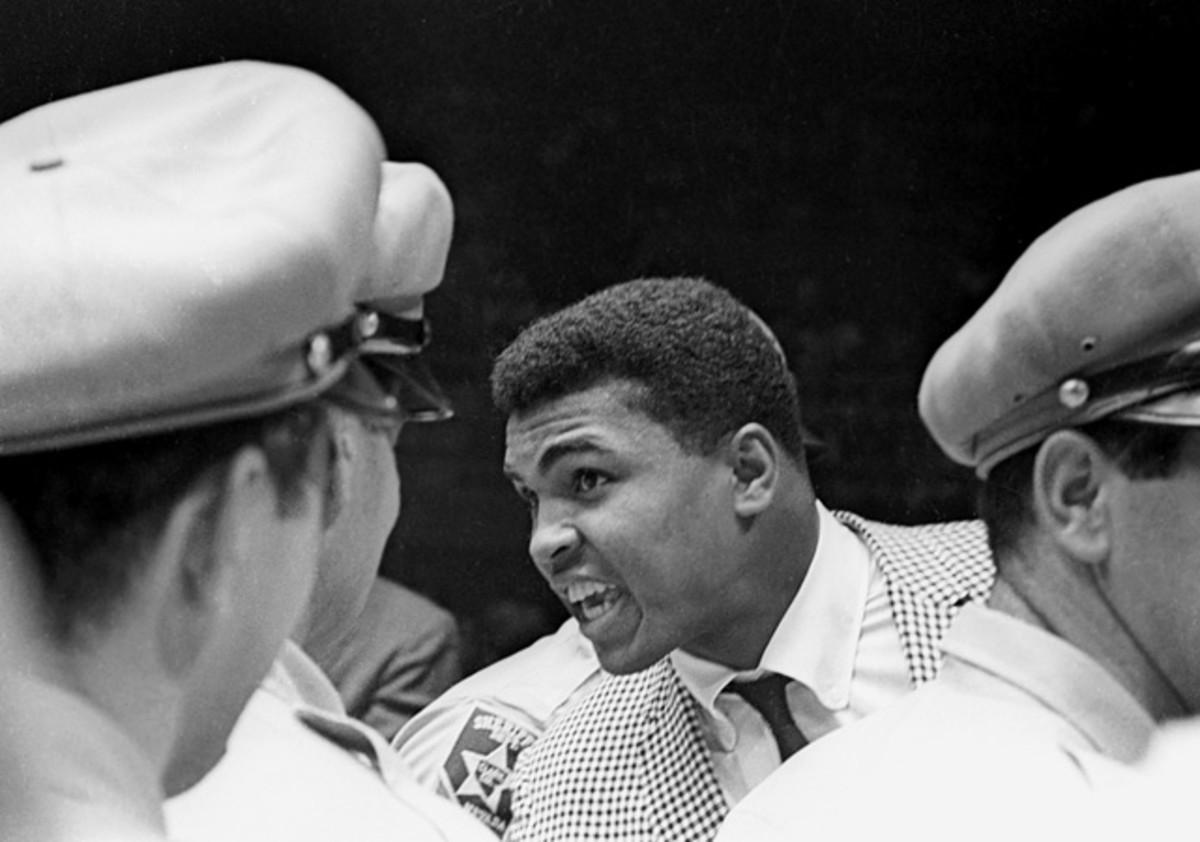
Certainly the loud-mouthed kid from Louisville was not the guy anyone expected to beat Liston. Cassius Clay (later known as Muhammad Ali) had won the light heavyweight gold medal at the Rome Olympics in 1960 and had run up a 19-0 record as a pro. The Louisville Lip, here taunting Liston from ringside after the second Patterson fight, was a master self-promoter, but seemed an unlikely challenger for the champion.
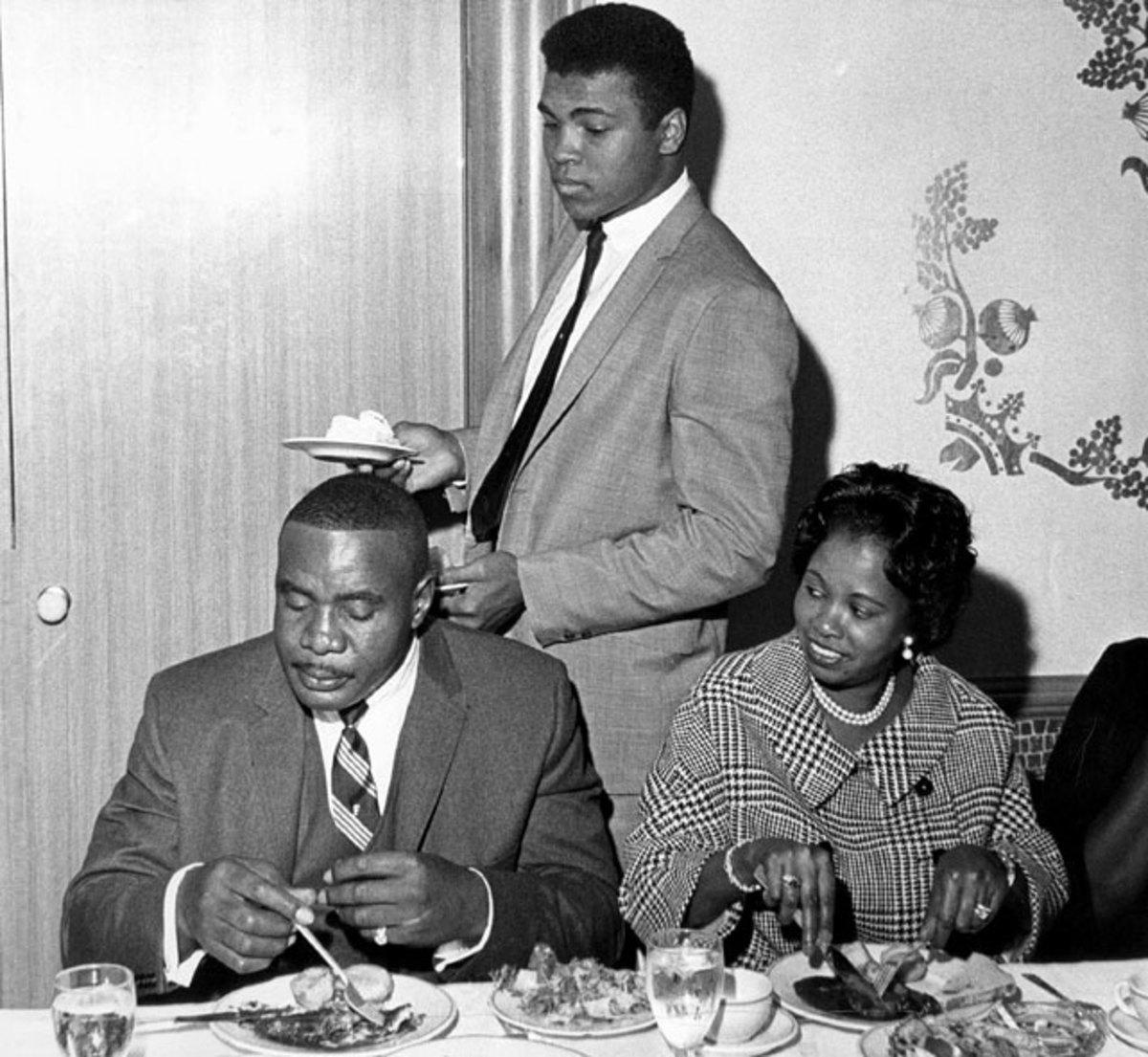
On Nov. 5, 1963, Liston finally signed to defend his title against the upstart Clay. At the press gathering to announce the bout, the challenger, his slice of pie (figuratively and literally) finally in hand, kept a wary eye on the champion as Mrs. Liston appeared to be awaiting some new development in the horseplay that highlighted wild press conference.
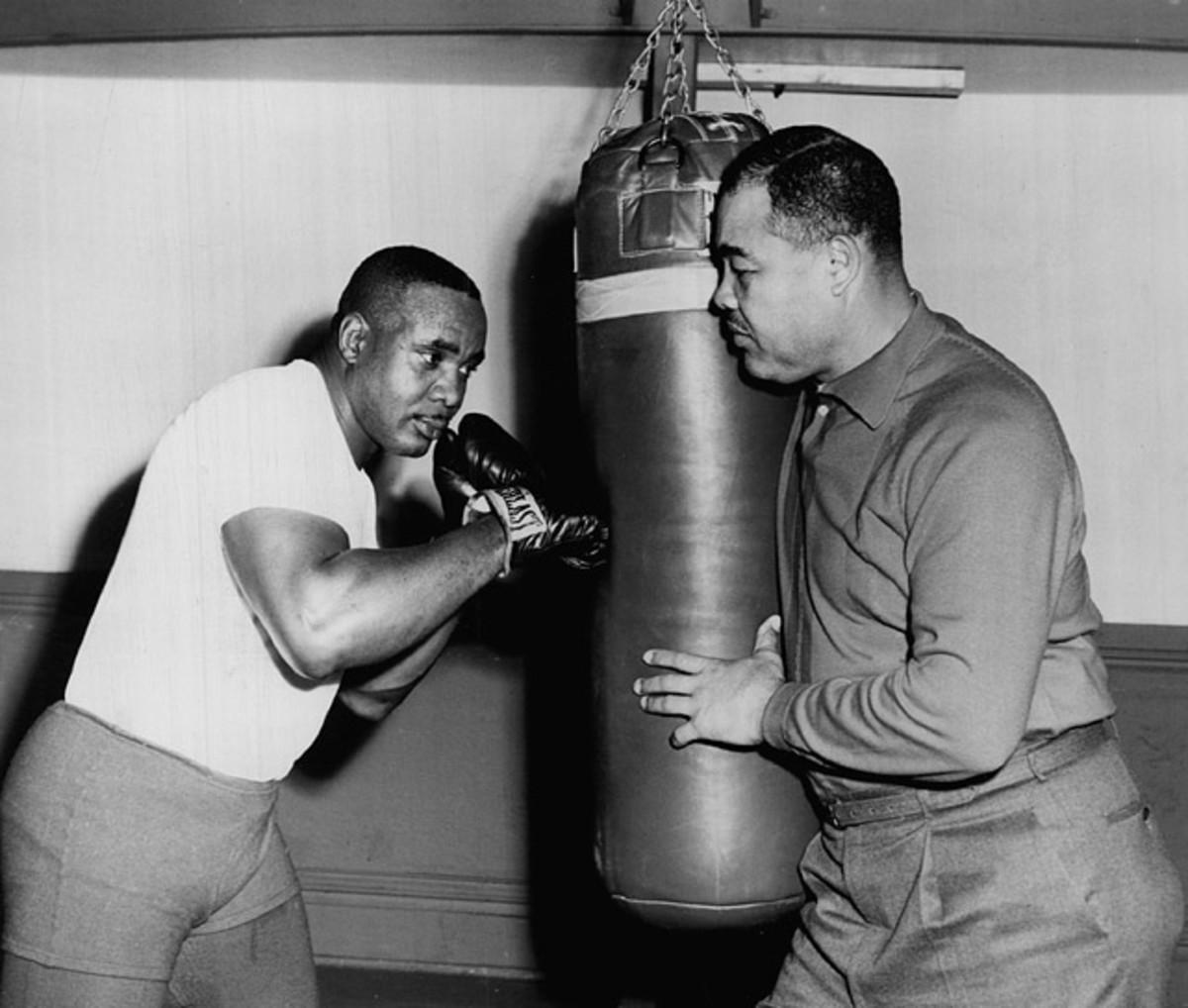
In December of 1963, Liston began training for his bout with Clay, scheduled for February 1964. Here, the reigning champ got some posed help from former heavyweight king Joe Louis.
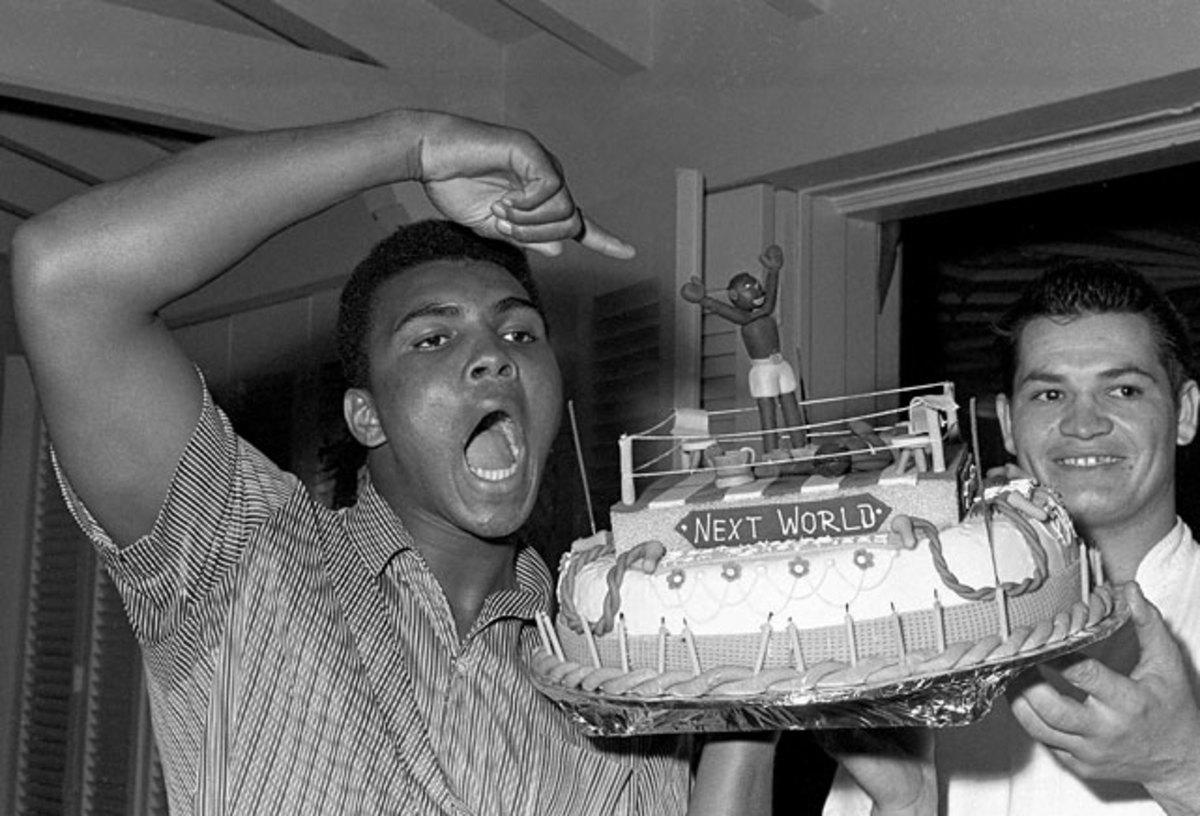
Ali turned 22 on Jan. 17, 1964 and (continuing the pastry motif) celebrated with a cake decorated with a boxing ring and a sweet tableau indeed: Sonny Liston in a horizontal position and the victorious Cassius Clay above him.
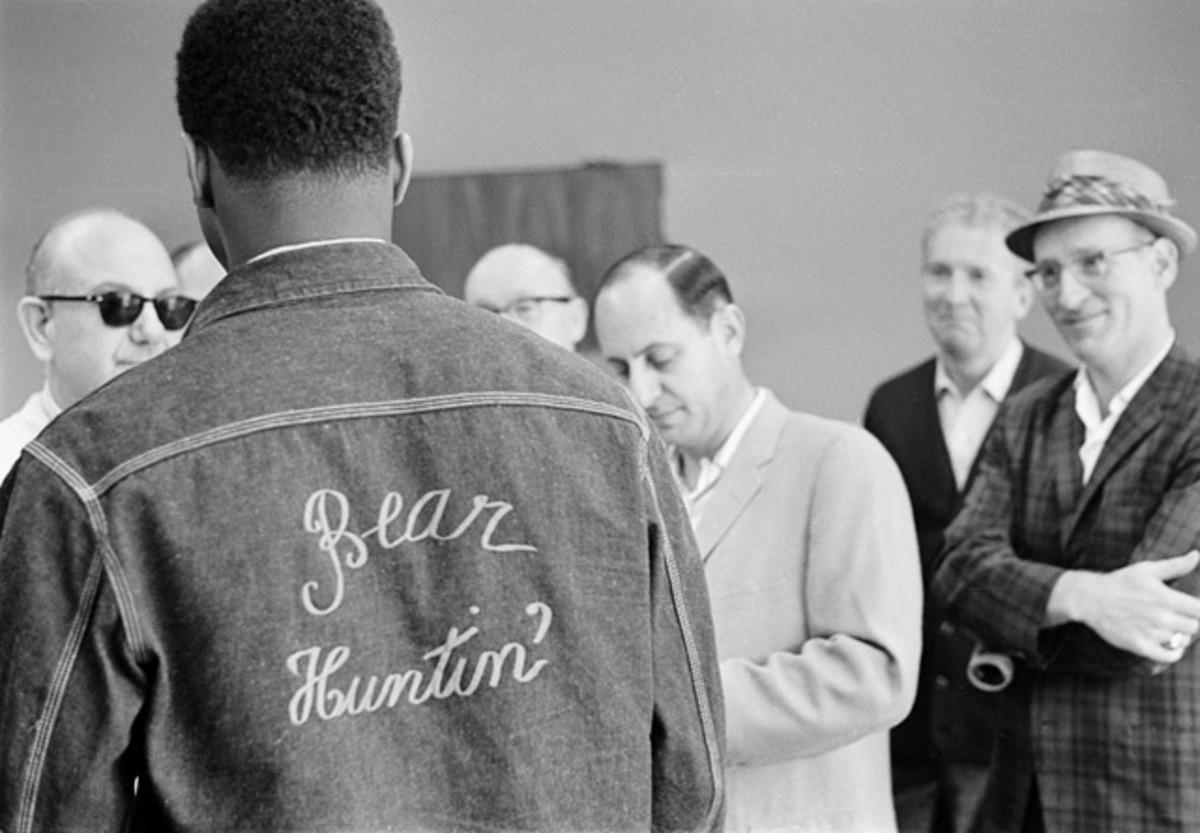
In the build-up to the fight, Ali had dubbed the menacing Liston "The Big Bear," and he made clear his intentions with the message on his jacket. Still, most observers felt that the challenger, here at the 5th Street Gym in Miami, was in for a mauling.
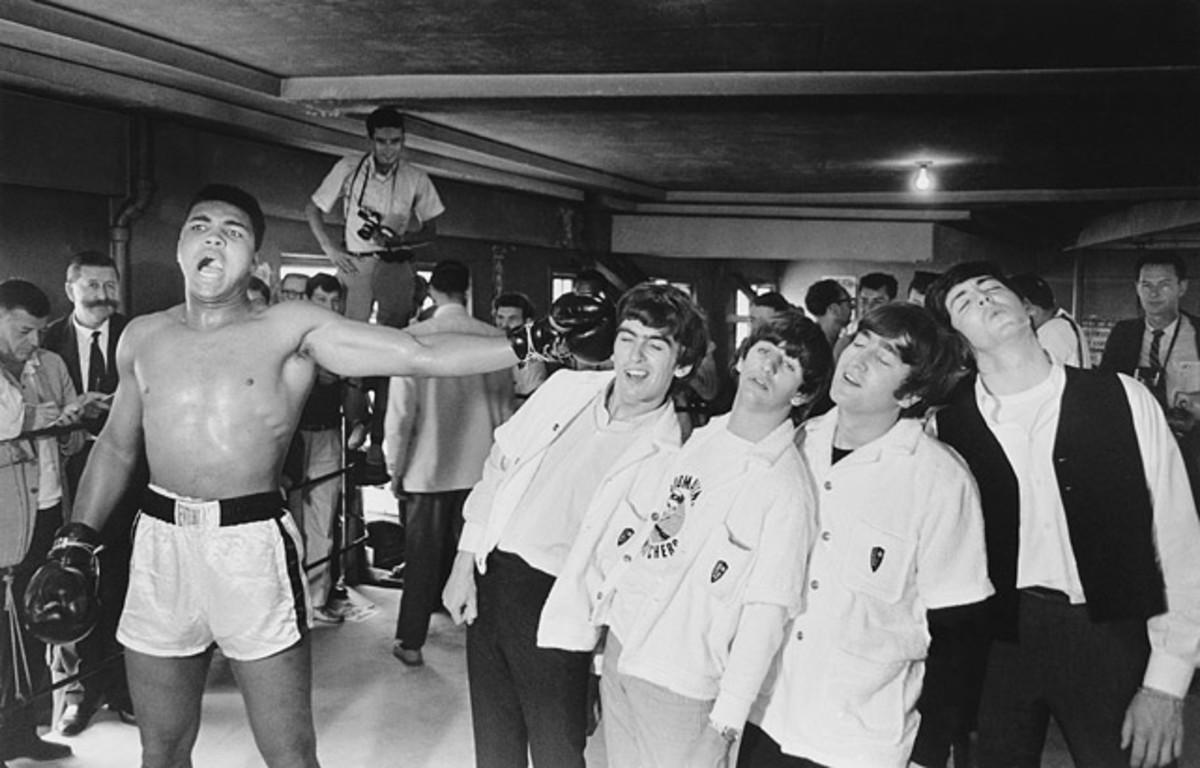
Fab Five? As a promotional stunt, somebody thought it would be fun to get Clay together with a group that was making some noise of its own. So, a week before the fight, the Beatles showed up at the 5th Street Gym. Neither really knew who the other was, but they produced some memorable images -- and, of course, each would go on to greater things.
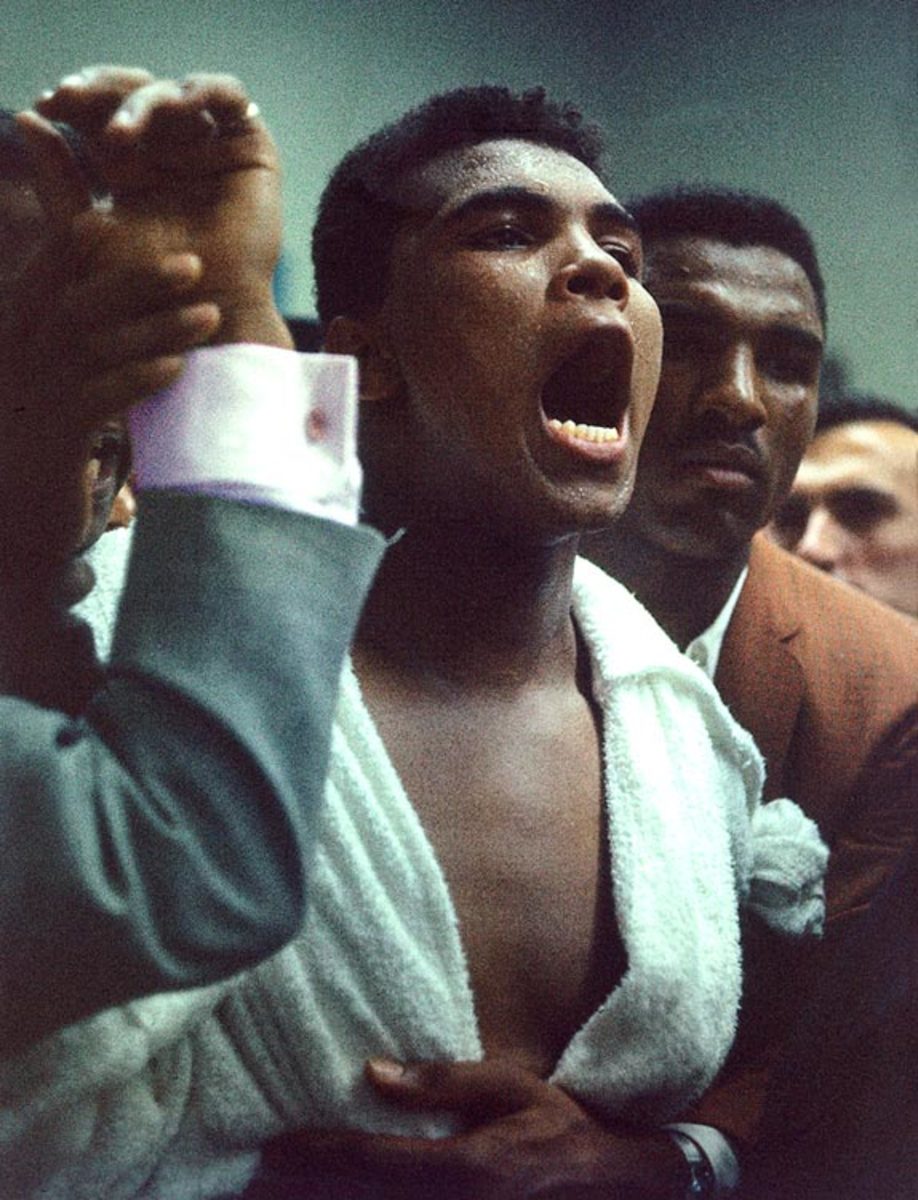
The weigh-in for the Liston bout was held in the densely packed Cypress Room at Miami Beach Convention Hall. There, just hours before he would go into the ring, Ali (then still Clay) produced one of his most memorable performances, ranting and threatening Liston and jumping about with such maniacal energy that many who saw him thought he was either terrified or having a seizure. What he was doing was convincing Liston that he would soon be fighting a crazy man -- a prospect that would frighten even Liston.
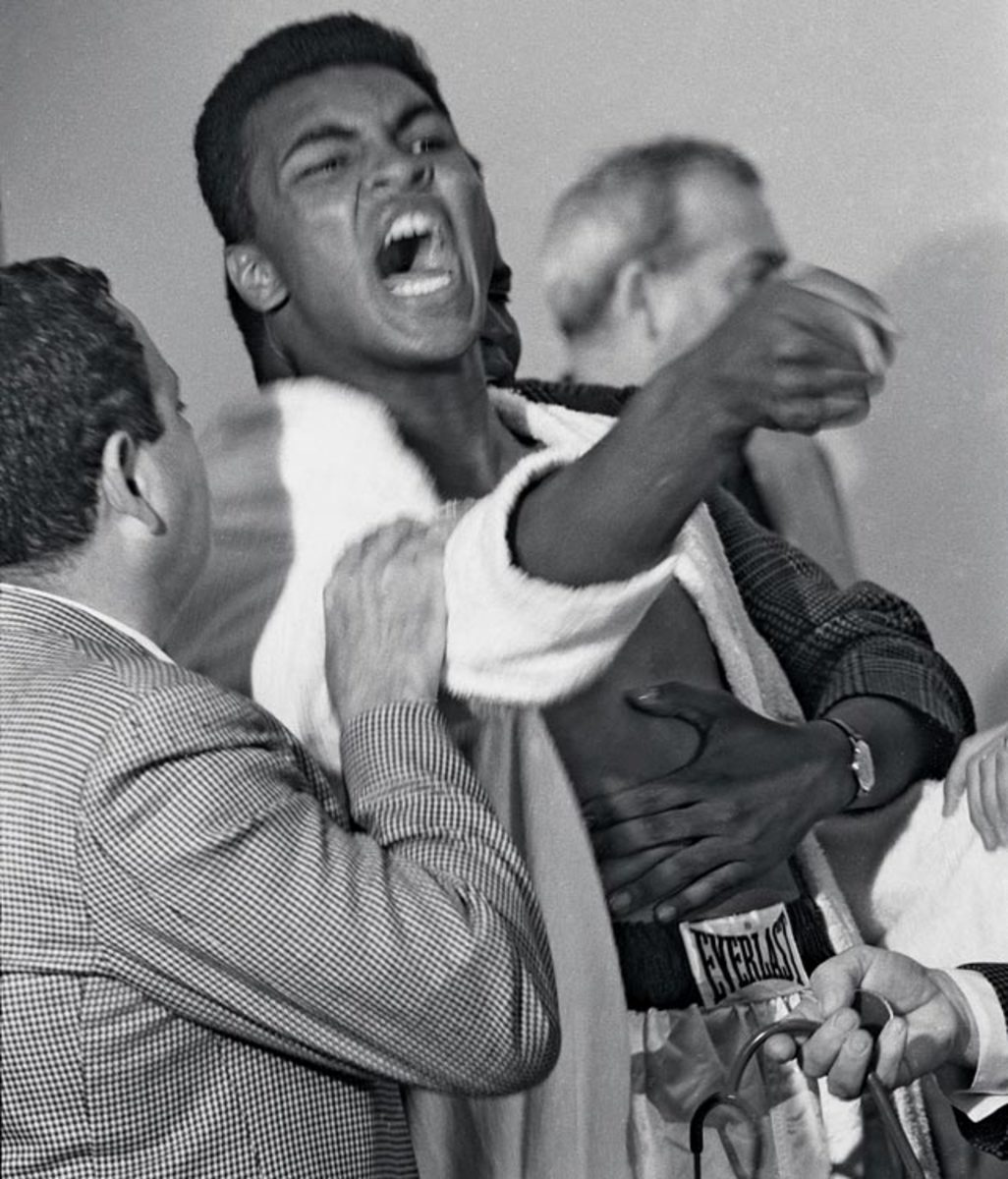
Ali, here being restrained by his trainer, Angelo Dundee, was fined $2,500 for his outburst. For the challenger, the effect would be more than worth it.
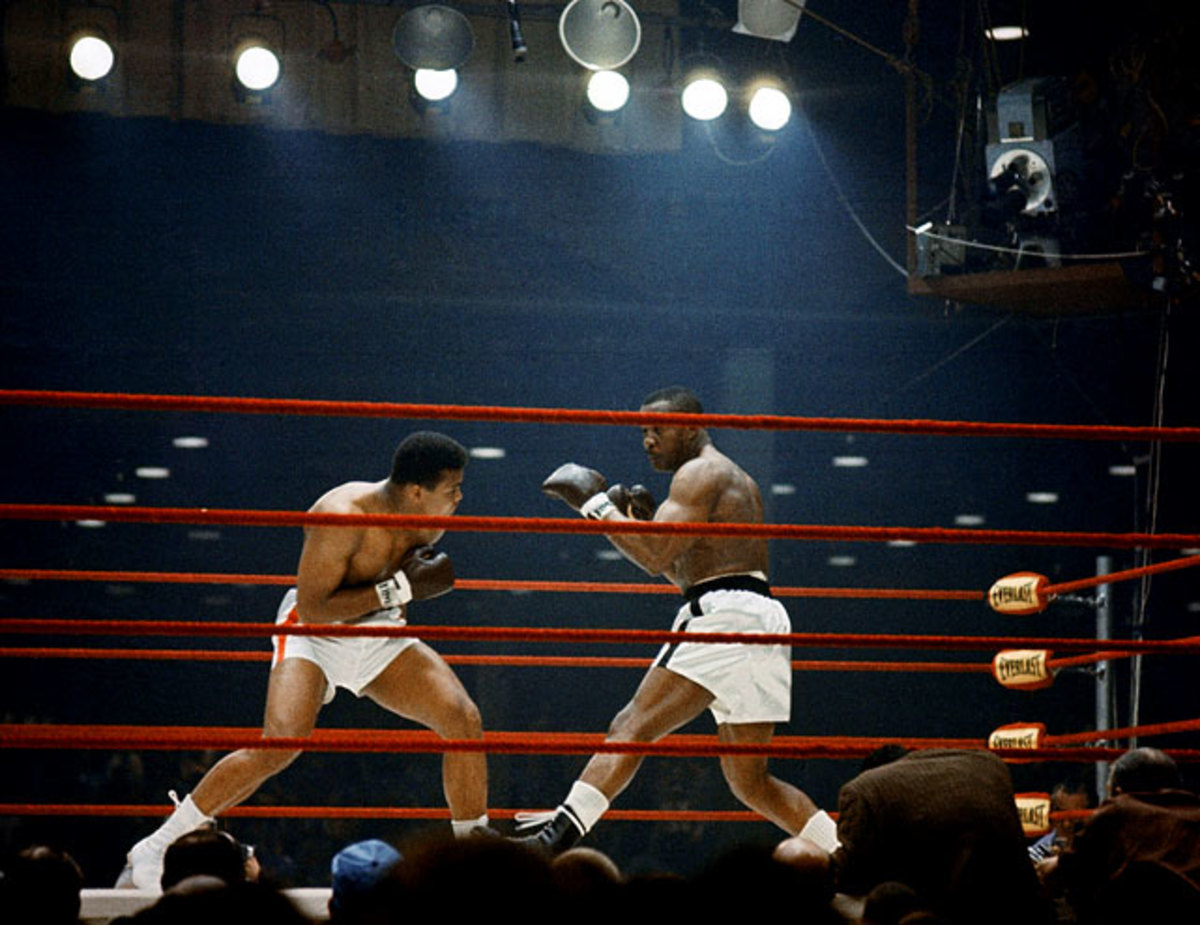
A change was gonna come: On Feb. 25, 1964, Cassius Clay, left, who would later became Muhammad Ali, stepped into the ring against Sonny Liston in Miami Beach, Fla. They met as the nation was on the eve of massive upheaval. Still deep in mourning over the assassination of President John F. Kennedy just three months earlier, the country would be rocked by race riots in major cities in the long, hot summer ahead. Civil rights activism was gearing up, the conflict in Vietnam was moving into U.S. headlines. The young challenger, a 7-1 underdog, represented the unsettling times ahead.
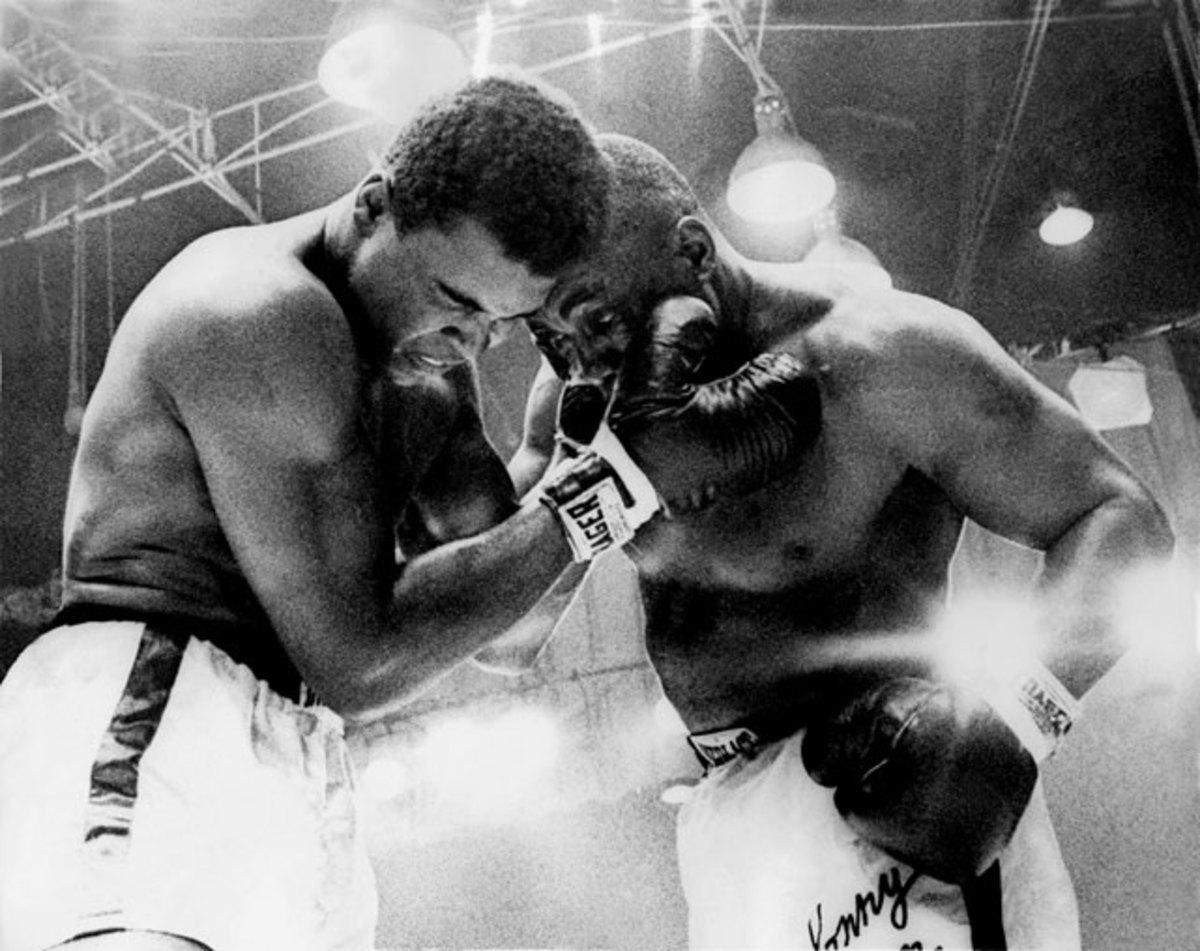
Most boxing fans expected Liston to overpower his challenger, but Clay was more than prepared for Liston's attack. Faster and more agile, Clay avoided Liston's big punches and tied the champion up in close, frustrating him from the opening bell.
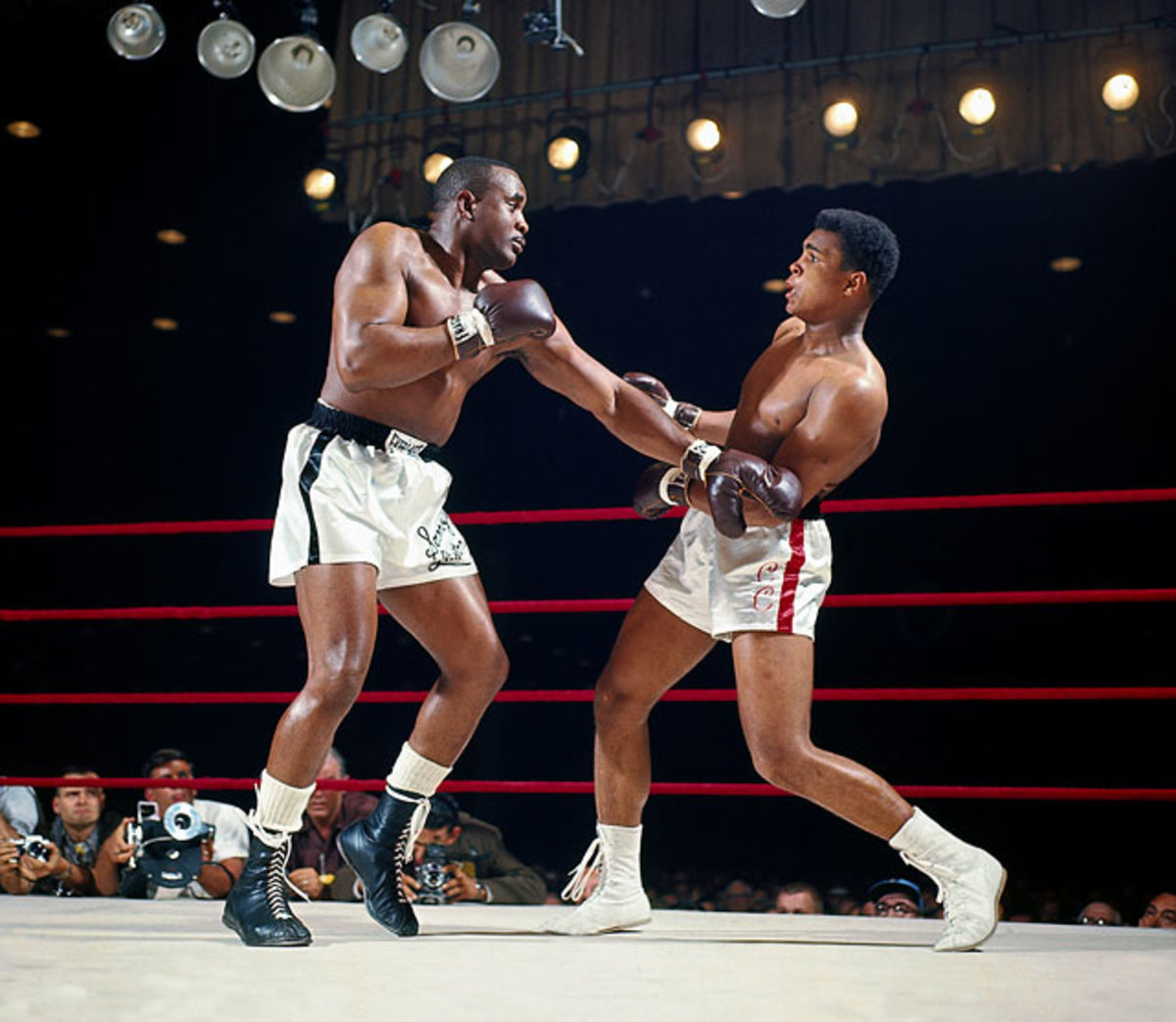
Clay's movement and timing had Liston lunging, and the Covention Hall crowd gasping. This was not the fight they had expected to see.
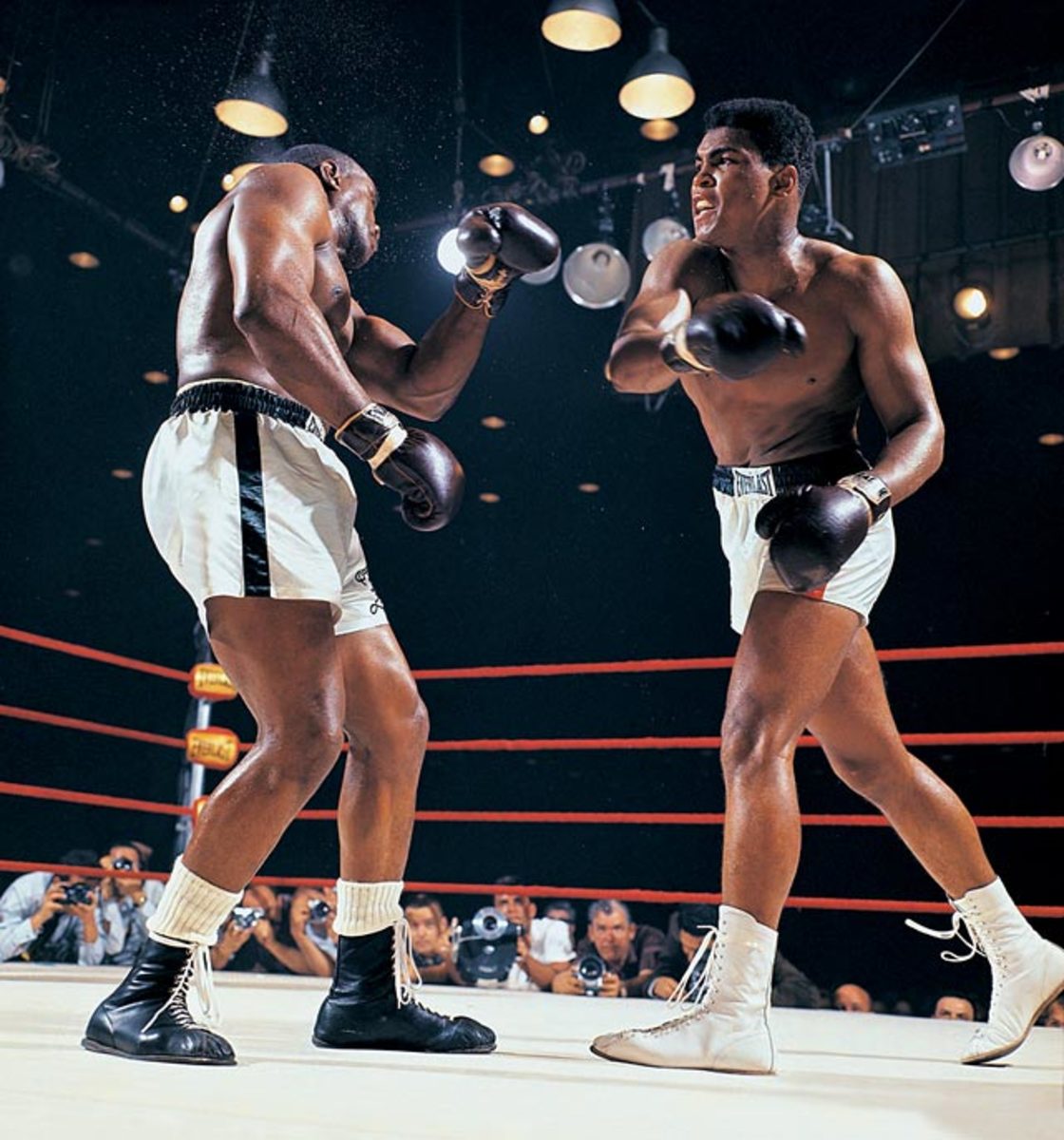
Clay not only made Liston miss, he also repeatedly stung the champion with a long, lacing jab and sharp overhand rights. Liston had never before been hit so readily.
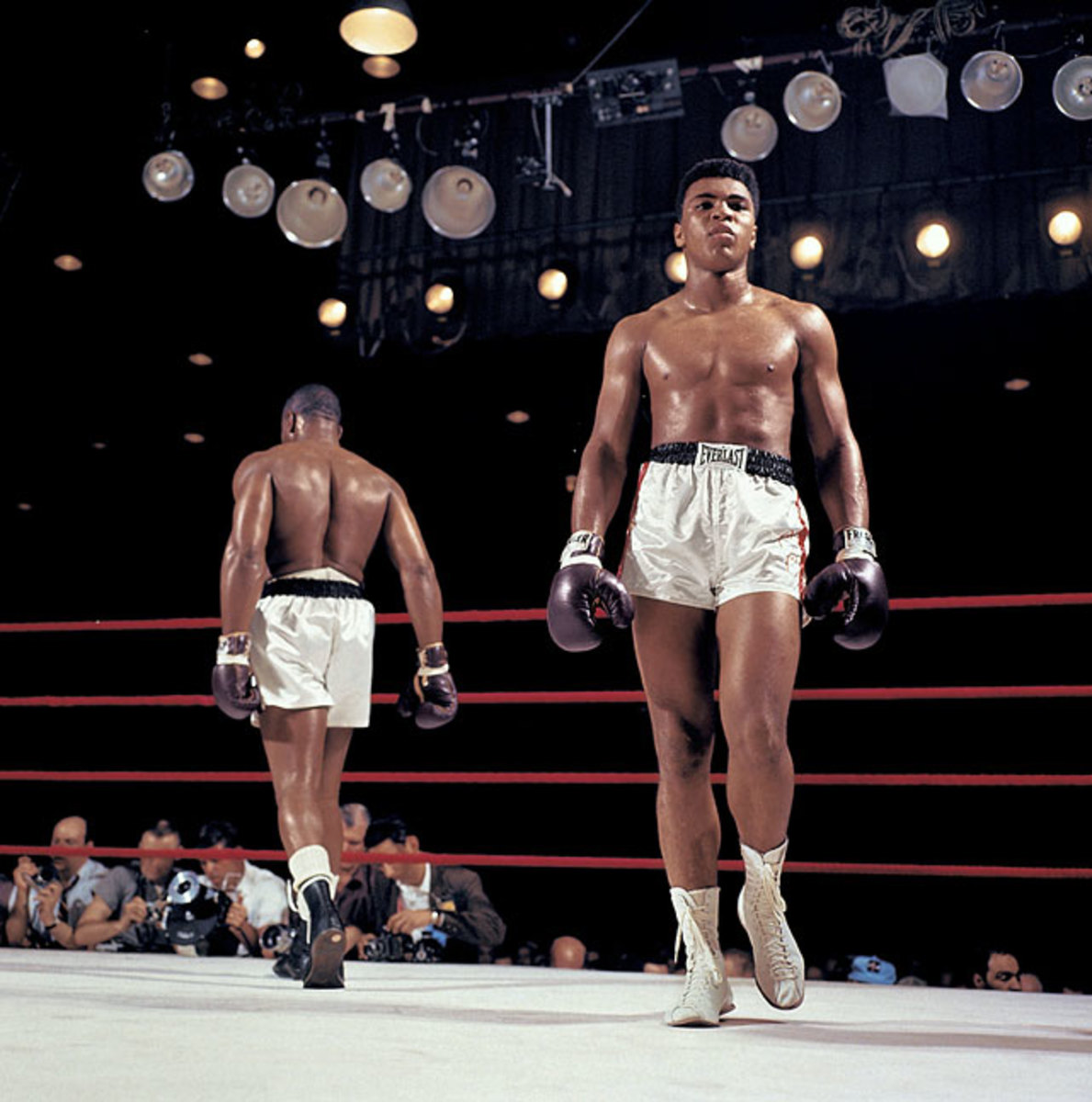
Already in the opening rounds, it was clear that the challenger -- who had been declared "terrified" during the weigh-in -- was in full control of both himself and of the fight. Liston, meanwhile, was obviously frustrated.
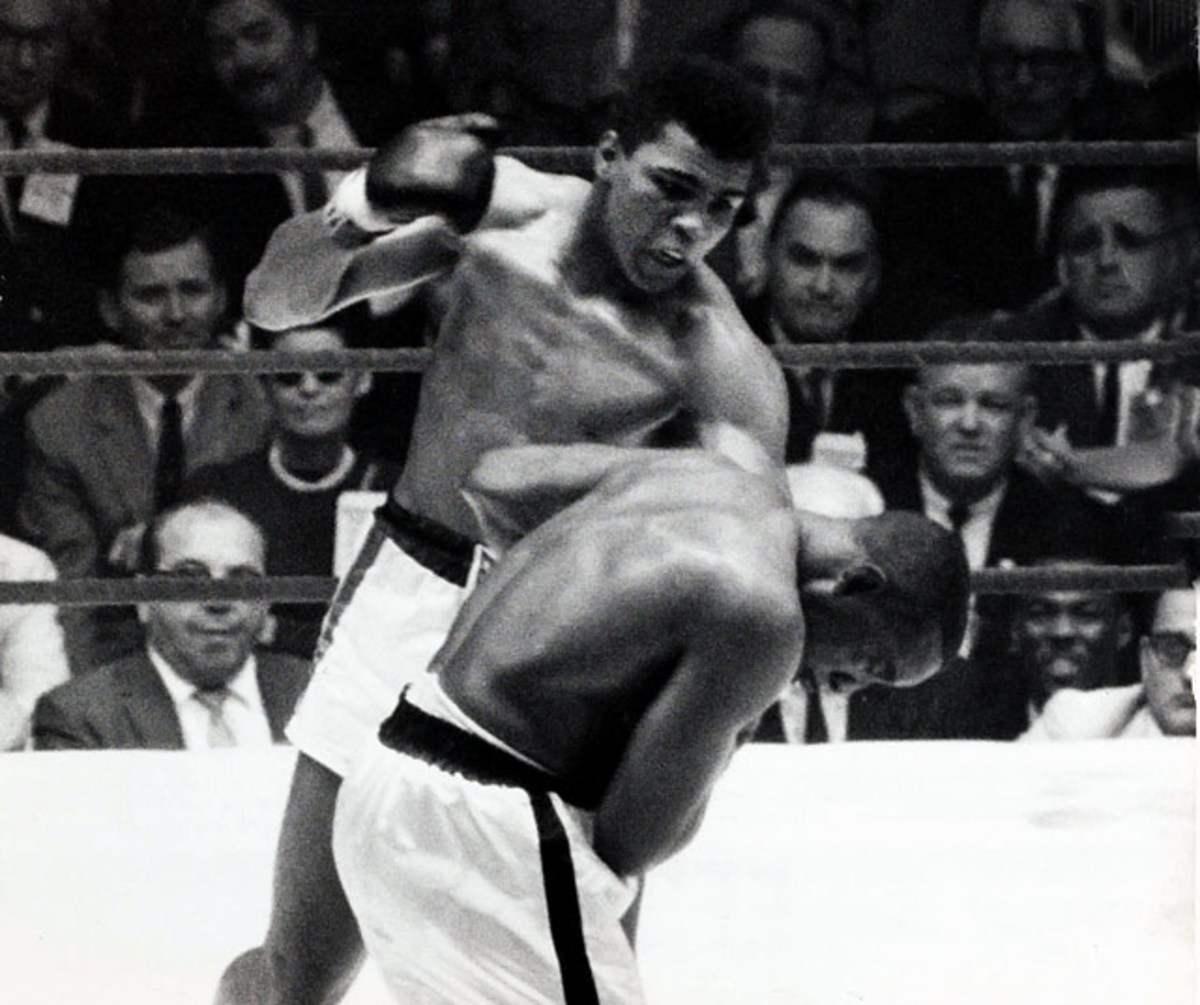
Putting his punches together in flashing combinations, Clay showed the ability not only to keep Liston off balance, but to hurt him as well. Suddenly, the expected mismatch was being turned on its head.
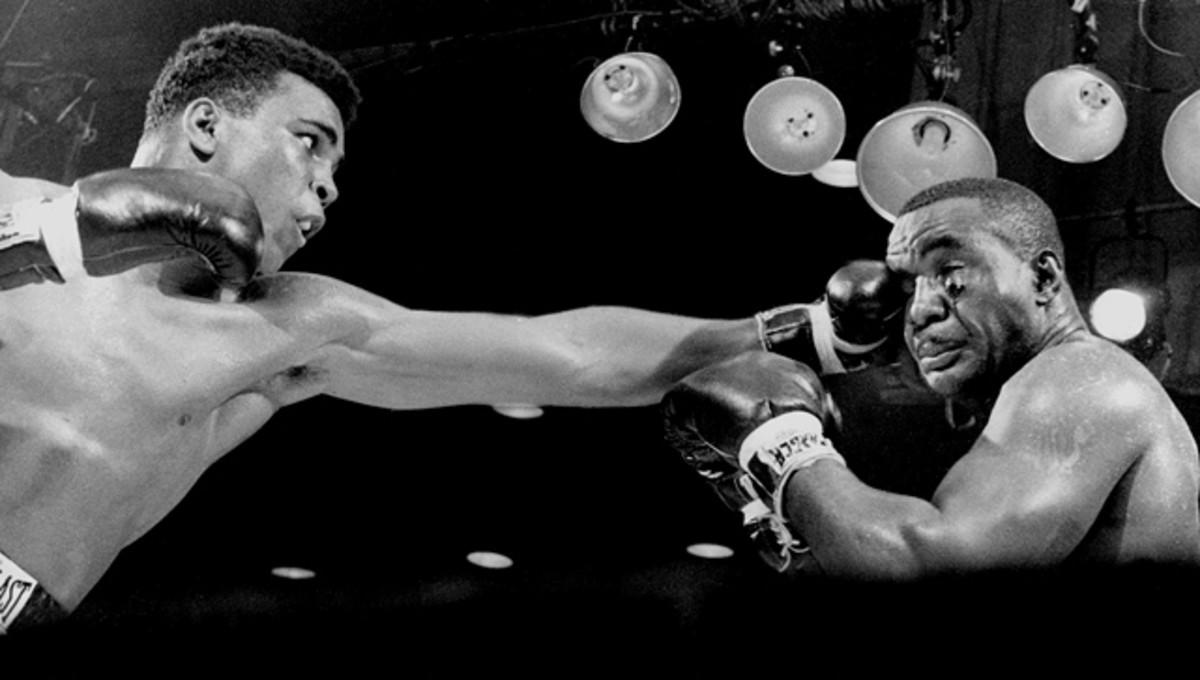
By the third round, Liston's face was showing the effects of Clay's slashing punches, and the once-fearsome champion was already looking like a much older fighter, one on the way to unexpected defeat.
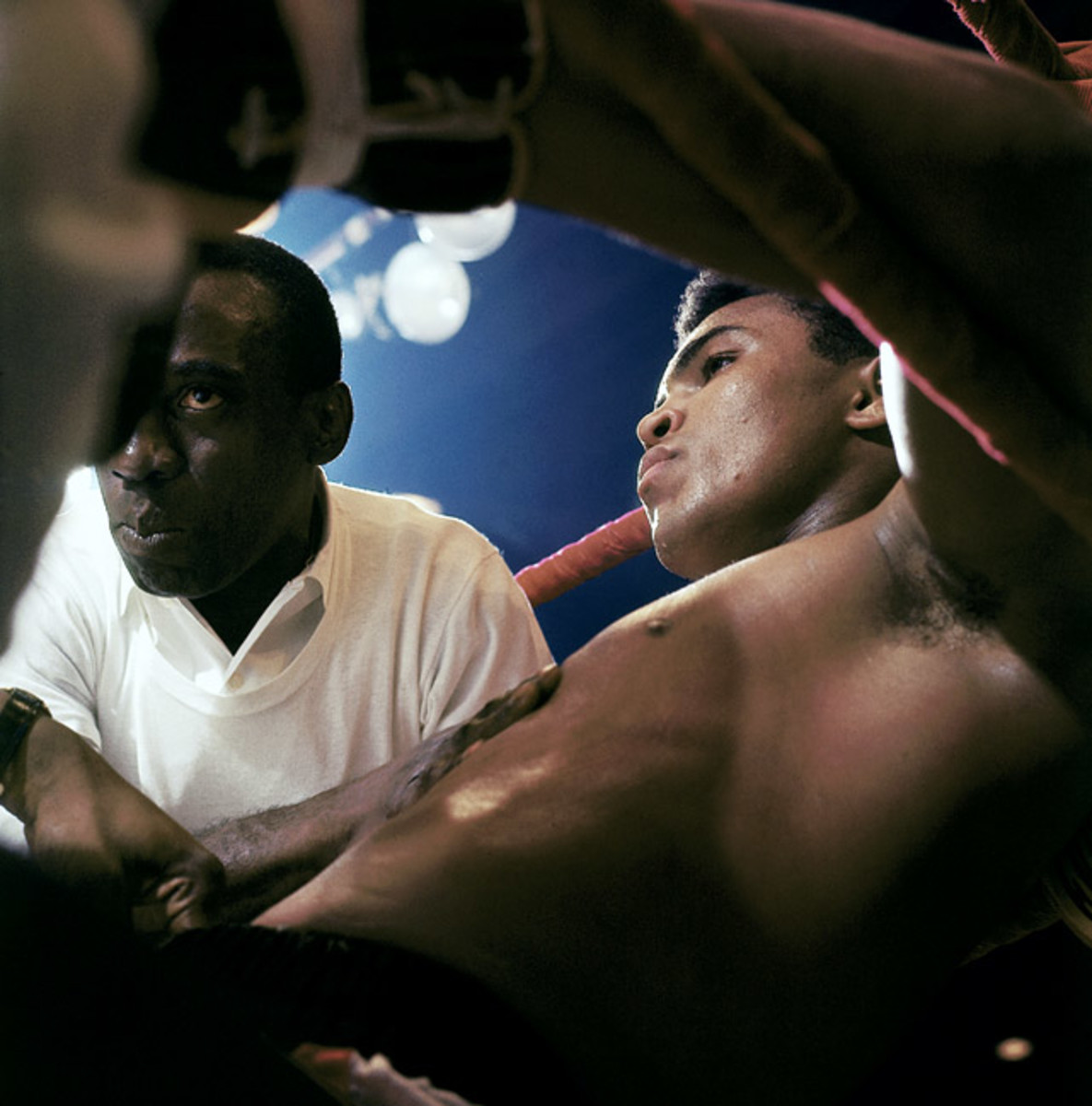
Clay appears composed in this shot taken between rounds, but he did suffer one scare during the bout. After the fourth round, he came back to the corner complaining of a burning in his eyes. One possible explanation is that a solution applied to stop the bleeding from Liston's cuts had gotten into his opponent's eyes (by accident, or by intention), but whatever the cause, a panicked Clay called for trainer Angelo Dundee to cut the gloves off him and stop the fight. Dundee responed by sponging out Clay's eyes once more and then pushing him back out into the ring at the start of the fifth round. A near-blind Clay round out the storm and, by the end of the round, was back to battering Liston.
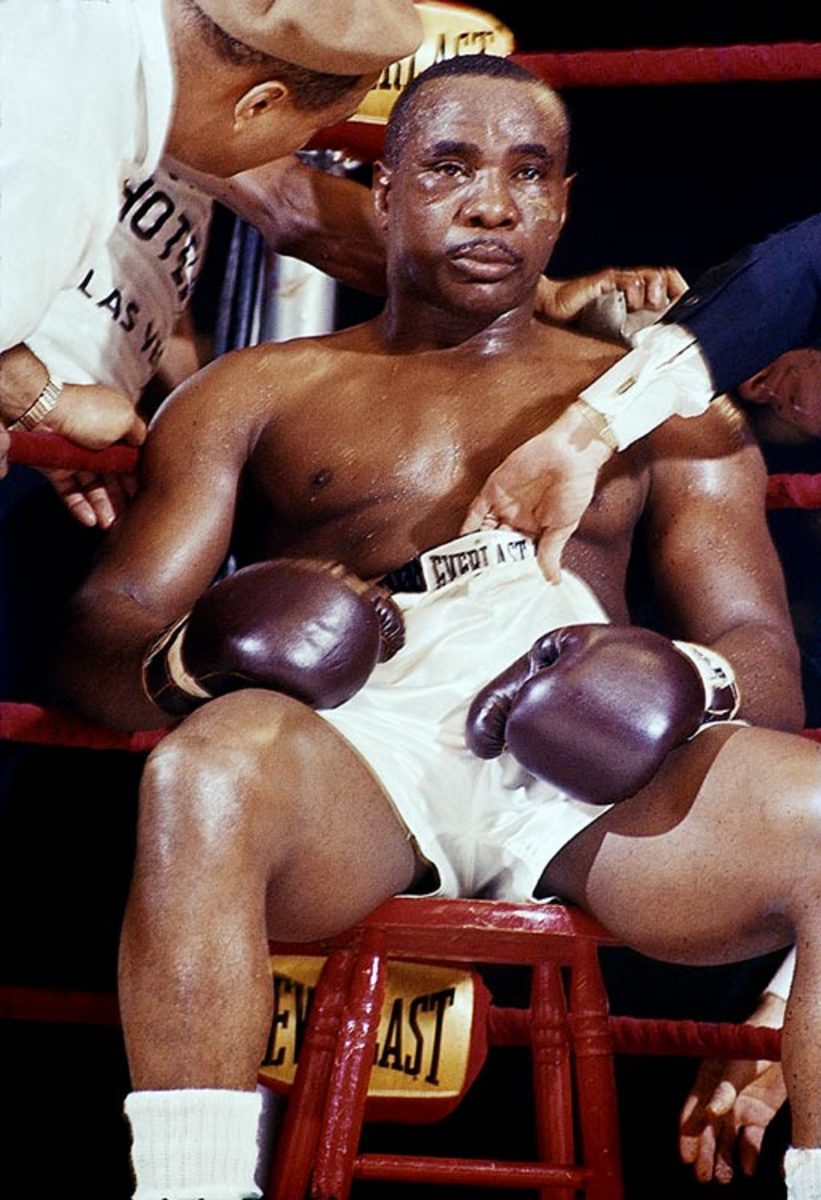
A champion beaten. An era over. Cut, battered and humiliated, Liston stayed on his stool when the bell rang to start the seventh round. He would later claim that his left shoulder was injured and that he couldn't continue because of that, but the truth was clear on his face.
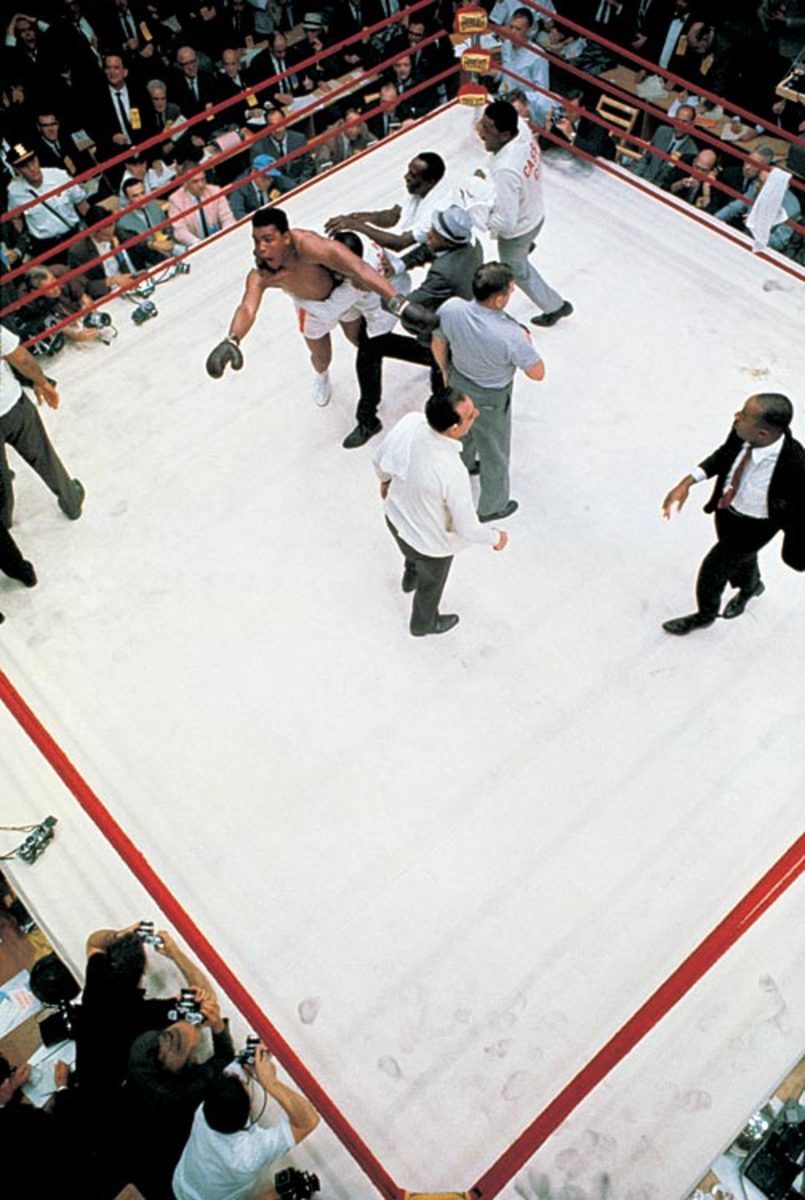
Realizing that Liston had quit and that he was the winner and the new champion, Clay lept off his stool and into a wild celebration, as his handlers thronged him and a stunned crowd reacted.
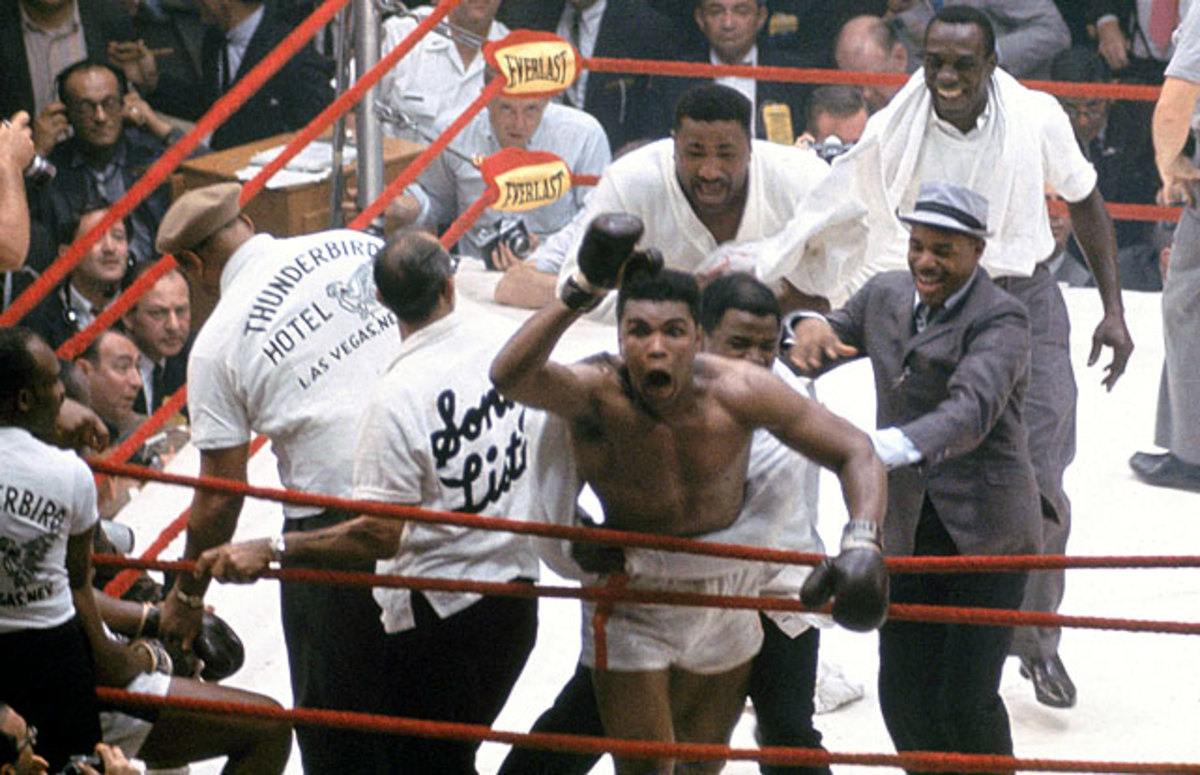
"I shook up the world!" Clay proclaimed, as he gestured over the ropes at the assembled press corps, virtually every member of which had predicted a Liston victory. He was right, of course -- and over the next decades, as Muhammad Ali, he would continue to it shake up, like no one before or since.
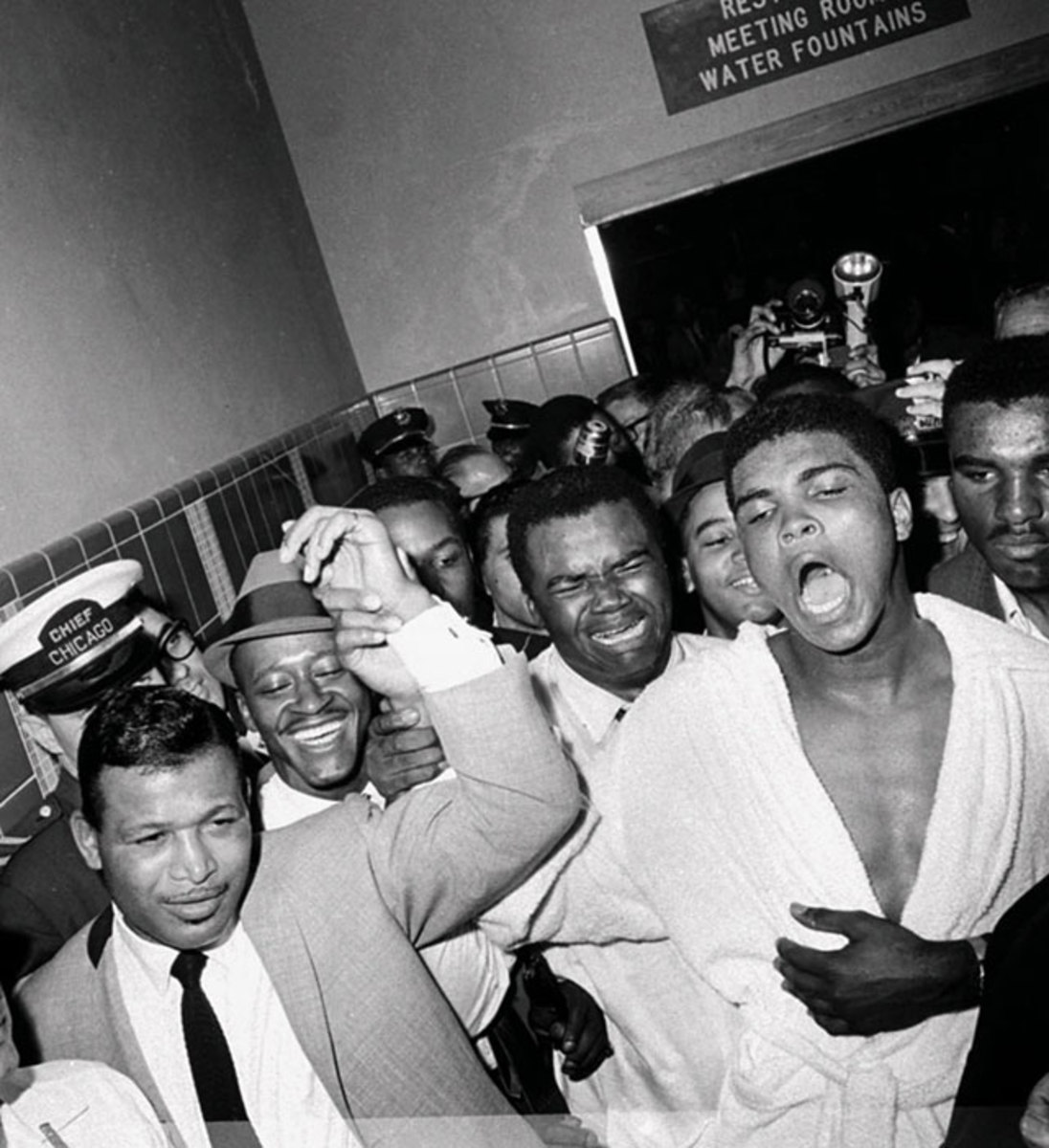
A sweet moment: Still celebrating and proclaiming himself the "greatest," Clay returned to his dressing room escorted by the great Sugar Ray Robinson (in tie), and trailed by his longtime friend and handler Drew (Bundini) Brown (over Ali's right shoulder).
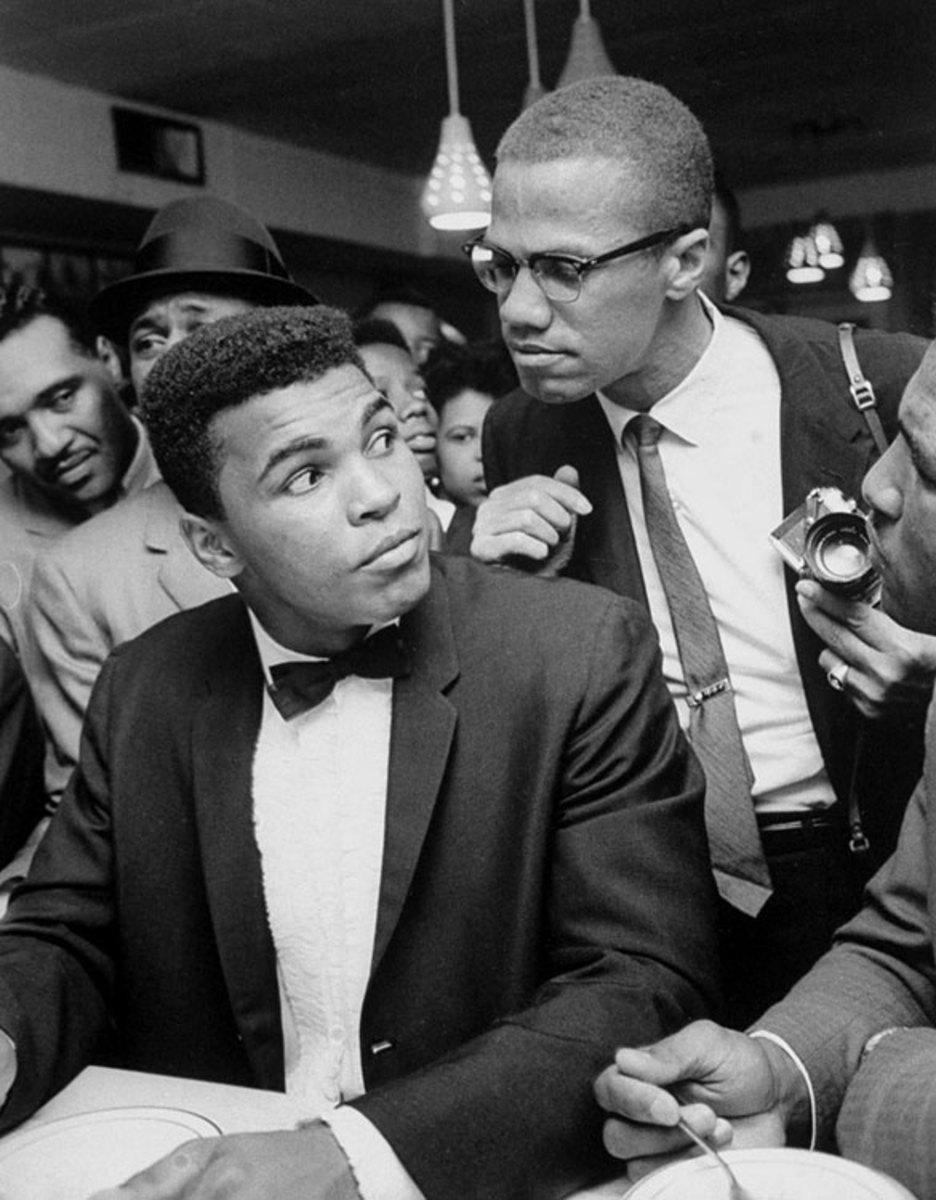
In a move that would further shake up the world (and outrage a large portion of American sports fans), the new champion announced immediately after the Liston fight that he was joining the Nation of Islam and changing his name from Cassius Clay to Muhammad Ali. This photo, from March 1964, shows Ali together with his mentor in the conversion to Islam, Malcolm X. Ali's association with the black nationalist leader opened a new chapter in his life and would carry him far beyond the boxing ring.
Ali vs. Liston II
Ali vs. Frazier I, “The Fight of the Century”
Ali vs. Frazier II
[youtube:https://www.youtube.com/watch?v=K0qsQmZ2TLg]
Ali vs. Foreman, “The Rumble in the Jungle”
Ali vs. Frazier III, “Thrilla in Manila”
Ali is survived by his wife Lonnie and nine children.
– Rohan Nadkarni
